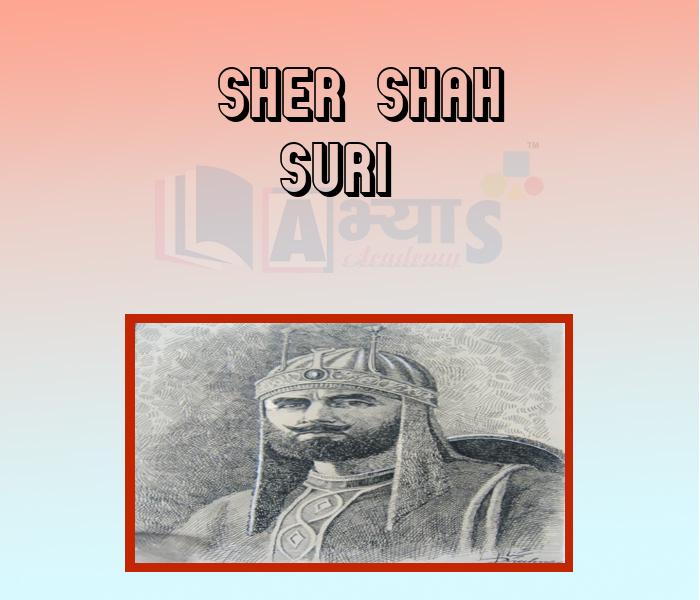Sher Shah Suri


Sher Shah Suri
Sher Shah Suri (1486 - May 22, 1545)
His birth name Farid Khan, also known as Sher Khan (The Lion King), was an Afghan emperor who founded the Suri dynasty with its capital at Delhi in India. He first served as a noble before rising to become a commander in the Mughal Army under Babur and then as the governor of Bihar. In 1537, when Babur's son Humayun was elsewhere on an expedition, Sher Khan overran the state of Bengal and established the Suri Empire. A brilliant strategist, Sher Shah proved himself a gifted administrator as well as an able general. His reorganization of the empire laid the foundations for the later Mughal emperors, notably Akbar, son of Humayun.
During his five-year rule from 1540 to 1545, be set up a new template for civic and military administration, issued the first Rupee and reorganized the postal system of India. He further developed Humayun's Dina-panah city, named it Shergarh, and revived the historical city of Pataliputra as Patna, which had been in decline since the 7th century CE. He is also famously remembered for killing a fully-grown tiger with his bare hands in a jungle of Bihar.
Who was the founder of Suri Empire? | |||
| Right Option : B | |||
| View Explanation | |||
Who first served as a noble before rising to become a commander in the Mughal Army under Babur and then as the governor of Bihar? | |||
| Right Option : B | |||
| View Explanation | |||
In 1544 AD, in the ____________________________ against Maldev in Marwar, the Rajput forces under the leadership of Jaita and Kunpa defeated Shershah. | |||
| Right Option : B | |||
| View Explanation | |||
Students / Parents Reviews [10]
My experience with Abhyas is very good. I have learnt many things here like vedic maths and reasoning also. Teachers here first take our doubts and then there are assignments to verify our weak points.

Shivam Rana
7thIt was a good experience with Abhyas Academy. I even faced problems in starting but slowly and steadily overcomed. Especially reasoning classes helped me a lot.

Cheshta
10thOne of the best institutes to develope a child interest in studies.Provides SST and English knowledge also unlike other institutes. Teachers are co operative and friendly online tests andPPT develope practical knowledge also.

Aman Kumar Shrivastava
10thAbout Abhyas metholodology the teachers are very nice and hardworking toward students.The Centre Head Mrs Anu Sethi is also a brilliant teacher.Abhyas has taught me how to overcome problems and has always taken my doubts and suppoeted me.

Shreya Shrivastava
8thAbhyas Methodology is very good. It is based on according to student and each child manages accordingly to its properly. Methodology has improved the abilities of students to shine them in future.

Manish Kumar
10thAbhyas is a complete education Institute. Here extreme care is taken by teacher with the help of regular exam. Extra classes also conducted by the institute, if the student is weak.

Om Umang
10thIt has a great methodology. Students here can get analysis to their test quickly.We can learn easily through PPTs and the testing methods are good. We know that where we have to practice

Barkha Arora
10thMy experience with Abhyas academy is very good. I did not think that my every subject coming here will be so strong. The main thing is that the online tests had made me learn here more things.

Hiya Gupta
8thA marvelous experience with Abhyas. I am glad to share that my ward has achieved more than enough at the Ambala ABHYAS centre. Years have passed on and more and more he has gained. May the centre flourish and develop day by day by the grace of God.

Archit Segal
7thI have spent a wonderful time in Abhyas academy. It has made my reasoning more apt, English more stronger and Maths an interesting subject for me. It has given me a habbit of self studying
